The Best Trailer Hitches Make Towing Better

With more and more drivers choosing to buy SUVs and pickup trucks for family duty, trailers of all types are becoming a more common sight on our roads. Deploying this newfound hauling prowess is one thing—but deploying it safely? That’s quite another.
We’ve rounded up some of the best trailer hitches you can buy to help you pick the right one for your towing needs. To learn more about towing, use the table of contents to navigate, but we’ll start out with list of the best trailer hitches you can buy before we dive into some more information about making towing safer and easier.
Whether one is hitching up a camping trailer, boat haulers, or a utility tag-a-long, being prepared is exceedingly important. We’ve gone through all aspects of towing and assembled them here. From trailer terminology to hauling habits, be sure to read this guide before you hit the road.
Table of contents
- 1. Editor's Pick: CURT 13333 Class III Trailer Hitch
- 2. Reese Towpower Class III Starter Kit
- 3. CURT 13146 Class III Trailer Hitch
- 4. CURT 13432 Class III Trailer Hitch
- 5. Weigh Safe LTB6-2.5 Drop 180 Hitch
- 6. Towever 84180 Class III/IV Ball Mount Trailer Hitch
- 7. BulletProof Hitches HD256 Trailer Hitch
- 8. Towever 84173 Class III/IV Trailer Hitch
- Towing: It's All About Weight
- What Are Trailer Hitches?
- Getting Hitched: Different Types of Trailer Hitches
- Why You Need Electric Trailer Brakes
- Types of Trailers
- Rear Axle Gearing
- Make Sure You Know How to Maneuver
- Factory Help
- The Right Aftermarket Gear
- Recent Updates
1. Editor's Pick: CURT 13333 Class III Trailer Hitch
The CURT 13333 trailer hitch is designed to provide a large variety of towing options. It works on everything including full-size cars, vans, trucks, and SUVs. These Class III trailer hitches are great for carrying fish boats, ATVs, and utility trailers, and also for providing more storage in case you want to tow a hitch-mounted cargo carrier or bike rack for the road.
The hitch is designed to fit every vehicle specifically so that installation becomes simple and easy for any family. It is tested according to government protocol to provide a weight-carrying ability of 6,000 lbs GTW and 600 lbs TW.
The hitch works with any weight-distributing hitch to give a stable towing experience with a weight distribution of 10,000 lbs WD and 1,000 lbs WDTW. Moreover, it has a 2-inch tube opening to insert any ball mount with a 2 x 2-inch shank. The hitch is made in the U.S. to provide quality design and a fine finish, using hands-on manufacturing for the right fit.
Both manual and robotic operations are used during production to provide better speed and quality. In fact, the company’s unique co-curing process is an engineering marvel. The hitch is immersed in liquid Bonderite to prevent rust, and then co-cured in a black powder coat finish to increase durability by ultimately resisting rust, chipping, or UV light.
Even if you’re still unsure about the hitch’s longevity, CURT provides you with a limited lifetime warranty to give you comfort during any adventure, all the time. Regardless of your travel needs, whether it be for hunting, fishing, camping, or work, the CURT 13333 trailer hitch is a great companion to have.
Pros | Easy to install, durable, lifetime warranty, for all vehicles |
Cons | No instruction manual, expensive |
2. Reese Towpower Class III Starter Kit
A well-known brand when it comes to trailer and towing accessories, Reese Towpower has a wide lineup of hitches. This recommendation is a Class III starter kit, which includes a ball mount, hitch ball, pin, and clip. Designed for unparalleled strength, the company fights rust and corrosion with a technology called “Metal Shield.” It’s essentially a coating that provides years of protection from the elements. These chrome hitch balls are constructed from solid steel and have been engineered to meet all safety requirements.
Measuring 8-inches long, this kit will fit 2-inch hitch box openings and the ball itself has a 2-inch diameter. The included pin and clip are 5/8 inch and there’s a 2-inch drop and 3/4-inch rise on this kit. It’s rated at a maximum 6,000 lb capacity.
Make sure to check out the brand’s other offerings if this specific hitch doesn’t fit your needs.
Pros | Extremely reputable brand, includes ball mount, hitch ball, pin, and clip, Metal Shield coating, 6,000 lb capacity |
Cons | Can be a bit loose in the sleeve |
3. CURT 13146 Class III Trailer Hitch
The CURT 13146 is designed using precise welding of high-quality metal and covered with a black powder layer using liquid Bonderite. The black Bonderite covering provides users with a stylish and sleek trailer hitch design that also manages to resist corrosion, damage, and rust.
The CURT 13146 trailer hitch is able to tow up to 8,000 lbs of GTW. The hitch itself weighs around 50 lbs and measures 21″ x 44″ x 10″. While this is a pretty heavy hitch, it is still surprisingly easy to install with or without a car lift.
This hitch bar gives you a simple and sturdy towing option that is made to last.
Pros | High quality, durable, strong, easy to install |
Cons | Heavy, expensive |
4. CURT 13432 Class III Trailer Hitch
Like all other CURT Class III trailer hitches, this hitch is made to handle many towing needs for many vehicles and people. The hitch allows you to carry useful towing accessories that range from heavy to light, including bike racks, campers, trailers of different types, boats, towing equipment, and more. You can benefit from the additional storage space as well as the easy carrying and increased weight capacity for versatility and convenience.
Each CURT 13432 trailer hitch is designed to fit a specific type of vehicle. This hitch is made for the Jeep Wrangler, but other vehicle owners can verify their compatibility using the manufacturer’s website.
The hitch has a basic GTW capacity of 3,500 lbs as well as a TW capacity of 350 lbs. Combined with a weight distribution hitch, you can benefit from more stable towing and increased weight capacity for better use. With the typical CURT metal welding, black powder finish, and manufacturer warranty, you know you’re getting a reliable and safe hitch for your towing needs.
Pros | Versatile, easy to install, stable, compatible |
Cons | Low weight capacity |
5. Weigh Safe LTB6-2.5 Drop 180 Hitch
The 180° LTB6-2.5 Trailer Hitch by Weigh Safe is a popular pick. The ball mount is designed to be adjustable, with one above and the other below. The 2-inch ball has a gross trailer weight capacity of up to 8,000 lbs. Along with a tongue weight of 2,200 lbs, the hitch is definitely built for heavy loads.
The rust-resistant aluminum build means the hitch will not be damaged by corrosion, rust, or scratches. The ball mount itself is designed using high-quality stainless steel for the ultimate construction.
The hitch not only exceeds V4/J684 certifications for quality assurance but also comes with the Weigh Safe customer service team that can help with any issues and replacements you may need to deal with.
Pros | Adjustable, large weight capacity, knob to prevent bottom ball damage, damage resistant |
Cons | Expensive, not suited for small cars |
6. Towever 84180 Class III/IV Ball Mount Trailer Hitch
The Towever 84180 Tri-Ball Mount is a leader in the towing industry in terms of compatibility, being able to fit all class III/IV 2-inch hitch receivers such as those by Curt, Draw-Tite, Blue Ox, Hidden Hitch, and other well-known companies and brands.
The ball mount excels in terms of design as well, making use of three connected chrome trailer hitch balls as well as a strong and durable tow hook. The Towever 84180 model can handle up to 10,000 lbs of gross trailer weight.
This multi-purpose ball mount is made to provide quick and easy exchanges between ball sizes without having to install or buy a completely different ball mount.
Pros | Affordable, popular, compatible, lightweight, versatile |
Cons | Hitch lock comes separately |
7. BulletProof Hitches HD256 Trailer Hitch
This BulletProof Hitches HD256 Trailer Hitch is designed for both drop and rise positions and is easy to install. BulletProof uses solid steel construction and its hitches are made in the U.S.
The hitch makes use of four different ride heights, which can be easily adjusted by pulling the two pins and switching the ball up or down. It comes with a high-quality patented BulletProof ball that has a gross trailer weight capacity ranging from 12,000 lbs to 22,000 lbs.
The sides of the steel bar are designed to provide the ideal appearance and operation, making it simple to take off the hitch and use it along with any other receiver. The hitch is also coated in an epoxy heavy-duty black powder finish for the best construction that can easily resist corrosion, rust, UV, and other scratches or damages for the best look and style over long periods of intense use.
BulletProof Hitches proudly offers a lifetime guarantee with its hitch.
Pros | Made in the U.S., large weight capacity, great design, damage-resistant |
Cons | Heavy |
8. Towever 84173 Class III/IV Trailer Hitch
This multi-ball hitch is designed to be used for quick and easy installation. You can switch between different ball sizes to accommodate different uses.
The hitch has a gross trailer weight capacity of 2,000 lbs to 10,000 lbs. This makes it great for use at home and even for large commercial or traveling purposes.
If you’re looking for an affordable hitch option that makes towing and installation a breeze, the Towever 84173 trailer hitch is a good pick.
Pros | Affordable, versatile, reliable, chrome design, black powder finish |
Cons | Brand not well-known |
Towing: It's All About Weight
Before getting started, make sure you’re fully aware of exactly how much your trailer weighs. Unless it is a homemade job that somehow passed inspection, there should be a factory sticker somewhere on the unit listing the trailer’s dry weight.
In this case, dry weight does not refer to the mass of a college student before they hit the bars and taverns on a Friday night. In terms of trailers, it means how much the thing weighs before any payload is added. Keep in mind that for some camping trailers, its dry weight measure was taken before the factory added interior furnishings and may not include things like the beds, couches, and refrigerator.
If you’re not sure, ring up a commercial weigh station and make an appointment to haul the thing down to their facility. Those places are designed to handle the loads of tractor trailers, so they definitely will be able to provide the operator with a readout of how much your tag-along weighs.
Read your truck’s owner’s manual and find your vehicle’s towing capacity. Certain options that cannot be discerned with the naked eye (such as rear axle ratios) can have a great impact on your machine’s maximum tow rating. Service departments of new car dealerships can also tell you this information by giving them the VIN of your specific vehicle.
Note well: even if your trailer weighs well below the limit, it’s important to try putting 60% of the trailer’s weight on the front half of the unit. This will increase stability and control at highway speeds.
What Are Trailer Hitches?
Most trucks these days come from the factory with trailer hitches and even many SUVs and crossovers are available with optional hitches. If you didn’t want to pay big bucks for an OEM or automaker solution, there are a lot of aftermarket solutions if you want to tow a trailer.
If you have to tow a trailer behind your vehicle, a trailer hitch is absolutely necessary. It is the only way to safely connect any trailer to a vehicle. If you want to tow a boat, some snowmobiles, dirtbikes, motorcycles, an RV, another car, or a trailer for equipment, you will need a trailer hitch.
Having a hitch is also useful if you don’t want to tow—having a hitch and a hitch receiver gives you the ability to use a lot of other aftermarket accessories like a hitch-mounted cargo basket or bike rack.
Getting Hitched: Different Types of Trailer Hitches
Hitching to the trailer is best accomplished with two people even if your vehicle is equipped with a backup camera. Thoroughly research the type of hitch and ball you’ll need, as determined by the weight of the trailer you plan to tow. Tongue weight, the amount of pressure exerted by the trailer on your hitch, should generally be about 10% of the trailer’s total weight.
Chains will be found on the hitches of most trailers and serve as the connecting point of last resort—if the trailer loses its grip on the hitch, chains will keep the trailer from striking the pavement and launching itself over your vehicle like an Olympic pole vaulter. Cross the chains over each other when connecting them to the tow vehicle. If disaster strikes and the trailer slips free of the hitch, it’ll land on top of the crossed chains rather than hitting the macadam.
The vast majority of trailers on the road are hooked to their tow vehicle by way of a conventional hitch. They are classed in fancy Roman numerals from I to IV (that’s 1 to 4 in case you didn’t pay attention in school). Class I hitches are rated for 2,000 lbs and are generally useful for towing a single donut or a pair of sneakers. Class II hitches are more common and can haul 3,500 lbs, which is about the maximum rating for most CUVs like the Toyota RAV4. From there, Class III and IV hitches handle 5,000 lbs and 10,000+ lbs, respectively, and are popular choices for people with pickup trucks who want to haul around large campers or boats.
Why You Need Electric Trailer Brakes
If you’re hauling a heavy trailer—such as a camper or utility trailer with a couple of bikes on it—make absolutely certain your trailer has electric brakes. These help immensely when approaching a stop sign or slowing from criminal velocities when the gendarmes pop into view over the next hill. These electric brakes are part of the trailer’s wheel and hub system and get their juice from the tow vehicle by way of a 7-pin umbilical cord plugged into an electrical receiver near your hitch.
You won’t want your electric trailer brakes to bite down with the same amount of ferocity in all situations. For example, when braking on the open road from highway speeds, you’ll want the trailer brakes to engage with a fair amount of vigor. On the other hand, slowly backing into a campsite or parking space requires but a feather’s touch from the trailer brakes as too much stoppage will lock the wheels and stymie your attempts of a clean parking job. Trailer brake controllers allow drivers to set the level of braking they require.
Types of Trailers
By far, the most common type of trailer is a tow-behind, one that connects to a vehicle by way of a ball and hitch. These units will deploy one of the hitches described above and hang off the back of a vehicle like one of those Garfield cats with suction cup feet. They can range from short utility trailers measuring 10 feet in length and weighing less than a graham cracker all the way to giant 37.5 foot camper trailers checking in at nearly 10,000 lbs.
Fifth-wheel trailers are a different beast altogether. Connected to a pickup truck by way of a large kingpin, the hitch for these units are generally mounted on the floor of the truck bed. Their handling behavior is unique, as are their weight distribution and maintenance. It takes a brave soul to deploy a fifth-wheel as their first towing experience. With practice, of course, it can be done.
Rear Axle Gearing
Remember the rear axle gearing we mentioned a few sections ago? We’ll discuss that in more detail here. Pickup trucks are often available with a variety of rear end options, generally with the intent of imbuing the machine with greater levels of towing prowess.
At the risk of oversimplification, the gear numbers advertised—3.42, 3.73, 4.10, and so forth—refer to the axle’s ratio of wheel rotations to driveline input. Shorter (numerically higher) gears are, most often, better suited for heavy hauling. Otherwise identical pickups can potentially be rated quite differently in terms of their maximum towing ability.
For example, a 2019 Ram 1500 Crew Cab 4×4 equipped with the 5.7-liter Hemi engine and a short box might seem like an ideal towing vehicle for your family—and it may very be. However, a truck so equipped but opted with a 3.21 rear-end gear can only tow 8,430 lbs. If it were furnished with the optional 3.92 rear-end gear, its towing capacity jumps to a herculean 11,530 lbs. If your camping trailer weighs 9,000 lbs, as many do, this distinction would pose a problem.
Both trucks could look identical to shoppers not aware of this distinction. After all, the rear axle and its components are tucked up in under the rig, far out of prying eyes. Even if one did crawl under the truck to have a look, it is impossible to tell via visual inspection what is contained inside that metal pumpkin. Be sure to go over the options list carefully before buying.
The presence of a 4×4 drivetrain impacts a truck’s ability to tow as well. Four-wheel drive components add weight to any machine, weight that can no longer be considered in its maximum hauling number. Body style—extended cab or crew cab, short or long box—impacts towing ratings for the same reason. Read your vehicle’s option list very carefully before buying that dream glamper.
Make Sure You Know How to Maneuver
Reversing with a trailer adds a whole new dimension to maneuvering. Thanks to the pivot point of the hitch between vehicle and trailer, the steering wheel must initially be turned in the opposite direction of where you want the trailer to go. This means if you’re backing into a space on your left, the steering wheel requires a neutron-numbing twirl to the right in order to get the trailer headed in the proper direction.
Practice, young grasshopper … and watch instructional YouTube videos. Fine-tune your reversing in an empty parking lot and make some trial towing runs on roads that aren’t clogged with traffic. Once underway, keep in mind braking will take longer, turns will be wider, and height-clearance signs will matter. With practice and planning, you’ll have a safe and successful trip.
Once you’re underway with your trailer in tow, it’s critical to keep an eye on events happing rearward, lest a gust of wind or another inattentive motorist scupper your vacation before it even gets started. Most standard-issue sideview mirrors are more than adequate for everyday driving but do little to provide the full story about what’s going on with your trailer. Some pickups offer big elephant-ear mirrors for a great view astern.
Factory Help
Automakers are well in tune with customer desires. Knowing that hauling is an activity undertaken by more and more people, OEMs are rushing to out-innovate each other in terms of helpful gear and gadgets. This is great news for those who like to tow.
Ford has developed a system whereby, through the use of electric power steering, one can turn a dashboard-mounted knob to steer while reversing with a trailer instead of going through the mind bending “turn it left to go right” mental gymnastics when using the steering wheel.
At GM, they’ve taken it upon themselves to stick a placard on the doorframe of every Sierra and Silverado that clearly states what that truck’s maximum tow rating is, given the options on board. This will simplify the lives of many owners, not to mention salespeople.
Nissan was the first on the ground with a way to check one’s trailer lights without a traveling buddy. By pressing a certain sequence of buttons on the Titan’s keyfob, the truck will cycle through all its illumination options—turn signals, brake lights, and so forth—without anyone in the cab. This will allow a single person to stand behind the trailer and make sure the lamps and lights are working on their unit. This would be impossible to do alone.
The Right Aftermarket Gear
If your vehicle wasn’t offered or equipped with proper towing mirrors, give consideration to picking up an aftermarket pair. Units that either slip or clip on your existing mirrors give the driver a broader view behind, especially when reversing. In the latter situation, keeping an eye on the corners of your trailer is critical, lest you neatly wipe out a picnic table while backing into a campsite.
Any tow vehicle will benefit from a weight distribution kit as the unit is designed to take some of the strain off its back axle. Essentially relieving a portion of the tongue weight, its system of bars and chains allow for a more stable towing experience with less yaw and sway. Steering will be improved too, as there is effectively less weight pressing down on the rear of the tow vehicle.
Why is this important? Too much weight in the rear will send the nose of a tow vehicle skyward, reducing steering effectiveness (as the tires aren’t solidly touching the ground anymore). Additionally, too much weight on the rear will cause one’s headlights to be pointed at the International Space Station, blinding oncoming traffic. This author chooses to deploy a weight distribution kit, thanks to his travel trailer’s alarming proclivity to crest 9,500 lbs when fully laden.
Now you’ve absorbed all this detail, go ahead and put some of it to real-world use. Practice is the key, so take it easy for the first few miles once you’ve hit the road. It’s not a race to the campground, so take it easy on the throttle at first. Remember that your stopping distances will be lengthier than normal, too, given all the extra poundage added by the trailer.
Be safe, have fun, and enjoy your trailer!
Recent Updates
May 17, 2023: Removed promoted product recommendation.
August 11, 2022: Updated with a new promoted product recommendation.
July 26, 2022: Removed unavailable CURT 14301 Class IV Trailer Hitch and Connor 1623750 Tri Ball Trailer Hitch.
February 11, 2022: Updated with a new promoted product recommendation.
March 24, 2021: Updated with a promoted product recommendation.
September 15, 2020: Updated with new product recommendations.
We are committed to finding, researching, and recommending the best products. We earn commissions from purchases you make using the retail links in our product reviews. Learn more about how this works.

Living in rural Canada, Matthew has immersed himself in car culture for over 30 years and relishes the thought of a good road trip. A certified gearhead, he enjoys sharing his excitement about cars and is very pleased to contribute at AutoGuide. Matthew is a member of Automotive Journalists Association of Canada (AJAC).
More by Matthew Guy



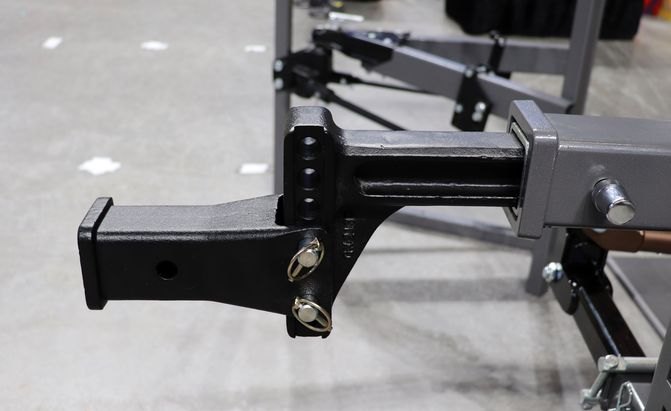




















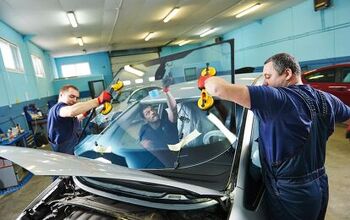

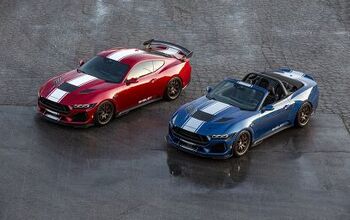

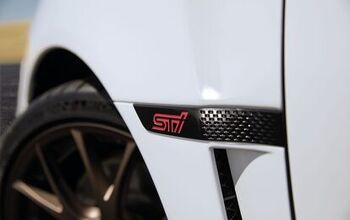


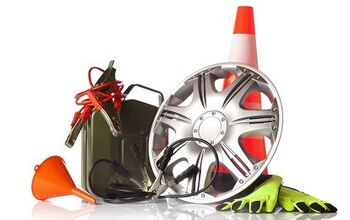

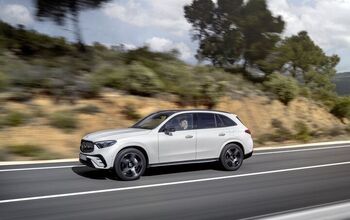
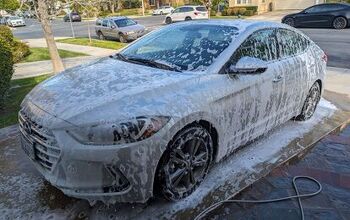
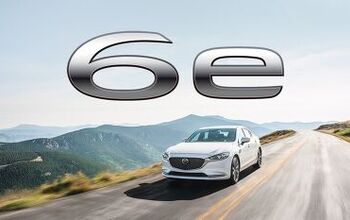




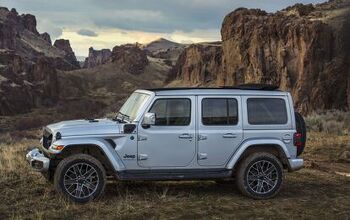
Comments
Join the conversation